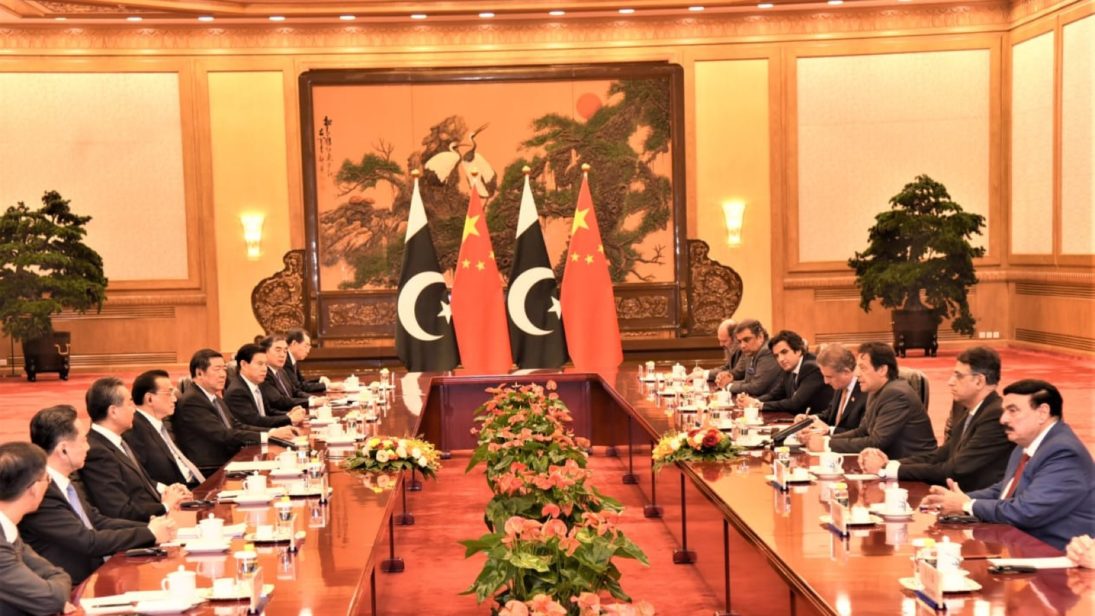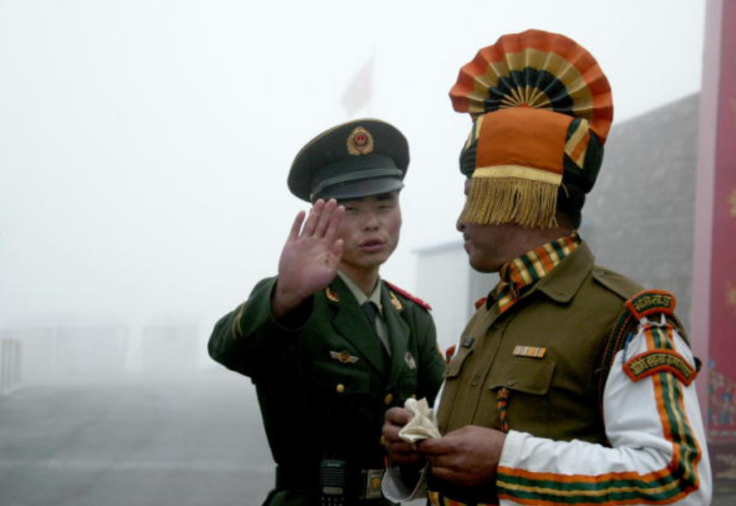
For over a month, Chinese and Indian troops have been in a renewed standoff along their disputed border. Although the conflict seemed to be subsiding following June 6 talks between military leaders, it appears to have heated up after twenty Indian soldiers were killed in clashes on the border—the first casualties since 1975. Amidst foggy information, South Asia watchers have debated the origins of the conflict from New Delhi’s construction of roads in disputed territories in its north to China’s growing aggression in the region. Many Pakistani analysts and policymakers have traced the conflict to India’s “illegal constructions” on its border with China—some may even be expecting China’s recent clash with India to act as a check on Indian expansionism.
As the border dispute continues, however, India remains an increasingly important Chinese trading partner—a partnership that seems to have been shielded from tensions on the border in the past decades. But even as the Sino-Indian relationship has evolved, Islamabad has maintained confidence in its historically strategic partnership with China against India, with little concerns that the Sino-Indian economic relationship would cause China to re-evaluate its support on Pakistan’s core concerns vis-à-vis India.
Pakistan’s Outlook on the Sino-Indian Border Conflict
The foundation of the China-Pakistan friendship was laid by the rupture in Sino-Indian ties after the 1962 war. Then Pakistan President Ayub Khan’s assessment that the border war would be limited and temporary with a longer “cold war” to follow has largely held true. Recently, Pakistani analysts have argued that New Delhi lacks the capability and will to fight against Beijing and instead maintains conventional superiority vis-à-vis Islamabad.
While the outstanding border disputes reinforce the basis of the China-Pakistan strategic bond, Pakistan also worries that New Delhi will use threats from China as a pretext for its military modernization through the foreign state-of-the-art arms acquisition—stirring up instability between India and Pakistan.
While the outstanding border disputes reinforce the basis of the China-Pakistan strategic bond, Pakistan also worries that New Delhi will use threats from China as a pretext for its military modernization through the foreign state-of-the-art arms acquisition—stirring up instability between India and Pakistan. Further, due to New Delhi’s growing strategic significance as a counterweight to China, the United States at most encourages, and at least disregards India’s more aggressive military posture and “hegemonic ambitions”.
Another way to look at Pakistan’s thinking on the Sino-Indian military relationship is by assessing the nature of Chinese involvement in Indo-Pakistani armed clashes. Two historical periods—before and after Pakistan’s nuclear tests in 1998—define China’s role in India-Pakistan military confrontations. Before 1998, Beijing supported Pakistan morally, diplomatically, and even at times militarily during the India-Pakistan wars in 1965, and 1971. In 1965, China mobilized its forces in Ladakh and on the Sikkim-Tibet border with India; and in 1990, a Chinese Defense Minister-led ten-member delegation visited Islamabad and expressed military backing of Pakistan as tensions were growing in Jammu & Kashmir (J&K).
After Pakistan’s nuclear tests in 1998, however, the nature of Chinese involvement changed. In subsequent India-Pakistan crises, including the Kargil War of 1999, the Twin Peaks crisis in 2001-2002, the Mumbai attacks in 2008, and the 2019 Balakot crisis, China’s role demonstrated a notable pattern: it had a shared interest with the United States in defusing the crisis situation and emphasizing restraint on both sides. The 2019 Balakot crisis, however, revealed a prominent shift in Pakistan’s view of China and the United States as crisis managers. Pakistan appreciated Washington’s and Beijing’s role in de-escalation, but lamented the United States’ discernible diplomatic tilt towards India before the escalation began. This pattern may continue in the future, as India may continue to have bipartisan U.S. support no matter who sits in the Oval Office.

Pakistan’s Stance on the Sino-Indian Economic Relationship
The Sino-Indian economic relationship factors into Pakistan’s strategic calculus insofar as it can alter the bases of the Sino-Pakistani relationship. The backbone of the enduring entente cordiale between China and Pakistan lies in Beijing’s uninterrupted arms transfers, assistance in domestic defense manufacturing as well as the civil nuclear program, and diplomatic support on the Kashmir issue. Massive Chinese investment through the China-Pakistan Economic Corridor is the latest link. If the Sino-Indian economic relationship causes a significant change in any of these elements of the strategic bond, the relationship may become unsteady. Remarkably, a “significant change” has not occurred in the past—nor is it likely to happen in the future.
Since the start of the strategic relationship with Pakistan in the early 1960s, China has publicly stated or signaled diplomatic support for Pakistan on the Kashmir issue. Beijing’s main policy shift on Kashmir was in 1980s to the early-2000s period. After Deng Xiaoping’s economic reforms in 1978 and Sino-Indian rapprochement in 1988, China shifted its position from invoking the United Nations Security Council Resolutions (UNSCRs) to stressing bilateral agreements (a more neutral stance on the issue). However, by the early-2000s, as India began to seem more closely aligned with the United States, Beijing signaled a shift away from the more neutral stance—denying a visa to a J&K-based General in 2010 and maintaining that the area he controlled was disputed. Lately, India’s unilateral moves since August 2019 have arguably forced Beijing’s hand in the contested territories. China’s recent quarrel with India may in part be to its own claim to the Ladakh territory—thus, a self-interest in internationalizing the issue—and in part to alert New Delhi against provoking China in league with the “anti-China” group of states.
China’s recent quarrel, including the border clashes, with India may in part be to its own claim to the Ladakh territory—thus, a self-interest in internationalizing the issue—and in part to alert New Delhi against provoking China in league with the “anti-China” group of states.
Furthermore, whatever the nature of Chinese involvement in Indo-Pakistani conflict, China has steadily supplied arms to Pakistan and assisted in its domestic defense industry and the civil nuclear program. Military-to-military ties lie at the heart of the China-Pakistan strategic relationship. Beijing has been Islamabad’s top historical arms supplier and has stayed so for over a decade now. Sino-Pakistan civil nuclear cooperation symbolizes a “balance of prestige” for Islamabad vis-à-vis New Delhi’s civil nuclear deal with Washington and the Nuclear Suppliers Group (NSG) waiver in 2008 that granted India the ability to trade civil nuclear technology—a privilege that Islamabad lacked. Pakistan has also reveled in China’s advocacy of not admitting countries, particularly India, that are outside the NPT to the NSG, as it parallels Pakistan’s stance on the NSG membership.
Unless Sino-Indian economic ties make a dent in these building blocks of the China-Pakistan relationship, Islamabad is unlikely to have a problem with the Sino-Indian multi-billion dollar trade. In fact, by some official accounts, Pakistan hopes that the importance of China’s economic relationship with India may help Beijing play the role of a moderator on New Delhi’s “belligerent” behavior vis-à-vis Islamabad.1
The Future Strategic Trajectory of the Triangular Relationship
If the global wave of right-wing populism was one factor, the COVID-19 pandemic is another major driver of putting the nation-state back at the center of geopolitics. China’s bullish diplomatic and military posture to push back against the allegedly global anti-China efforts and India’s more assertive diplomacy with its neighbors, unilateral demarcations, and renewed territorial disputes are the prototypes of the role of rising nationalism in interstate relations. As a resolution of the latest border scuffle between China and India, it seems unlikely that India will succumb to the Chinese pressure and reverse the legal and military infrastructural developments in the disputed territories, not least after the deaths of at least 20 Indian soldiers.
What seems more likely is that India will not compromise on anything below the Chinese troops’ withdrawal and the status quo ante; and, China will not back down until India agrees to jettison the idea of an overt anti-China discursive and military containment strategy. However, as both India and China seem to have an interest in de-escalation, as a medium- to long-term strategy, India may feel better served by espousing a kind of France’s China strategy—deepening engagement with Beijing as an essential partner to sustain the rules based order in the Indo-Pacific and pressure China when it does not respect it. India’s strategic partnership with the United States, Japan, Australia, and France, at times the hesitant participation in the QUAD and its embrace of the Wuhan Spirit lend credence to this approach.
As for Pakistan’s perception of these developments and the future of the strategic triangle, its concerns that India can use competition and a threat from China to advance its military capabilities will only crystallize. Pakistan appears confident nonetheless that Beijing will continue to invest in its strategic and military capabilities, remain committed to the CPEC, and support it on the Kashmir issue and the nuclear developments vis-à-vis New Delhi. China may also see these investments as a guarantee against India’s potential choice to espouse the anti-China strategy. For now, the future of the strategic triangle appears increasingly unstable, as competition deepens in the region.
Editors Note: As India and China mark 70 years of diplomatic ties, SAV contributors look back at Sino-Indian economic, political, and strategic relations since 1950 and analyze trends to watch for in the years ahead. The full series can be viewed here.
***
Click here to read this article in Urdu.
Image 1: Pakistan PMO via Twitter
Image 2: DIPTENDU DUTTA/AFP via Getty Images


